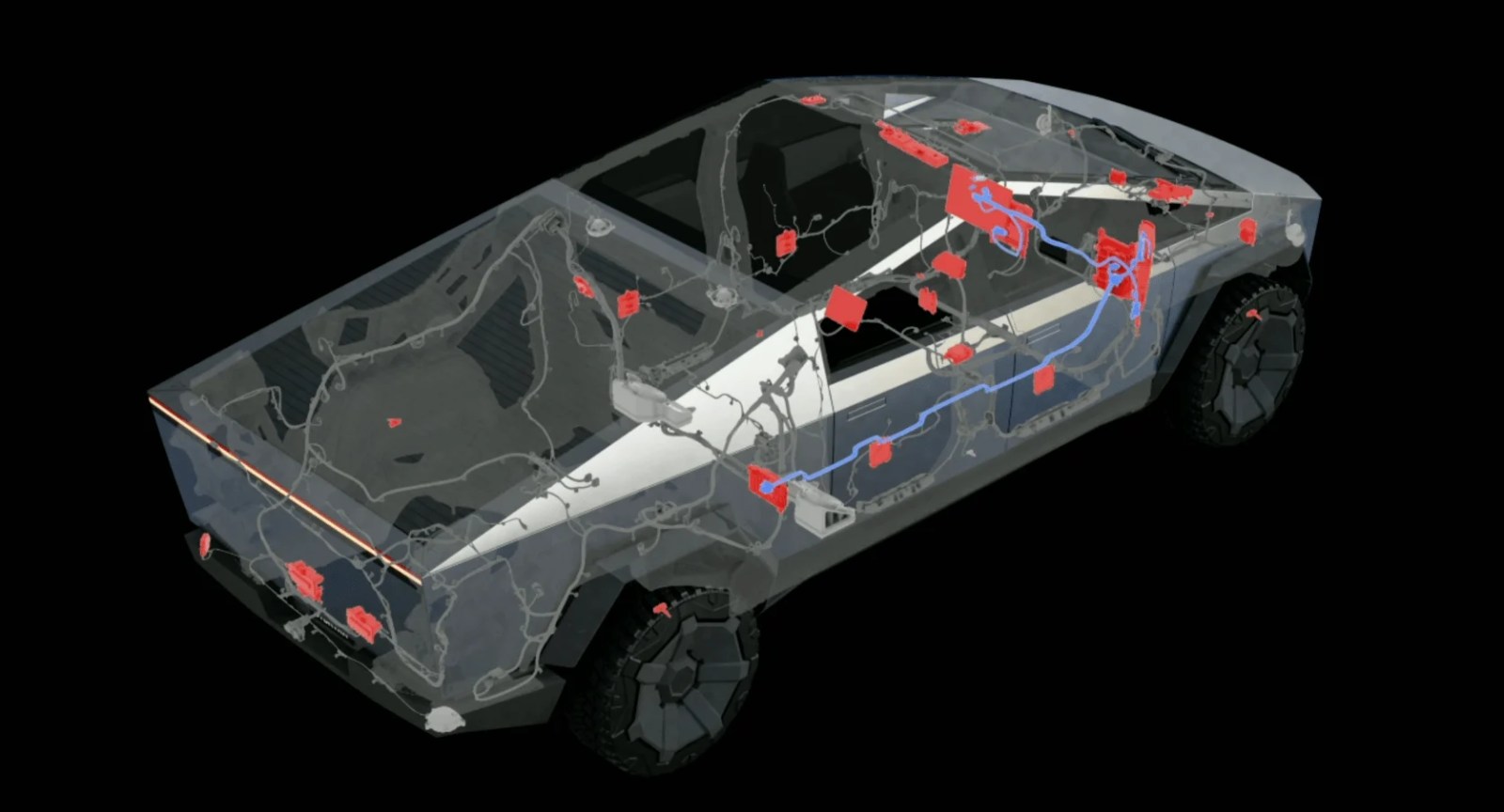Fred Lambert
2024-10-28 12:29:00
electrek.co

Tesla has released a rare new blog post, and it’s an interesting one: Tesla is trying to standardize automotive connectivity and popularize a 48-volt architecture.
After successfully standardizing its charge connector (NACS), Tesla wants to repeat this success with all the other electrical connectors inside vehicles.
Tesla introduced a new 48-volt low-voltage electronic architecture in the Cybertruck, or a hybrid version of it, to be fair. The automaker designed new connectors for it, and it is now suggesting that these new connectors become a standard in the auto industry.
Tesla wrote in the blog post:
To accelerate the world’s transition to sustainable energy, we are simplifying the manufacturing process and electrical connectivity requirements for all our vehicles. This includes the implementation of our Low-Voltage Connector Standard (LVCS), which allows us to reduce the large number of connector types required to just 6. These 6 device connectors are designed to meet the power and signal requirements for over 90% of typical electrical device applications. This standardization unlocks further operational efficiencies, cost reductions and manufacturing automation.
Tesla shared this image of the 6 connectors that make the LVCS standard:

Tesla added about how LVCS was built on top of the Cybertruck’s electronic architecture:
LVCS expands upon the same 48V electronic architecture used for Cybertruck. It meets the requirement for increased spacing for 48V operation and is available in industry-standard light blue. The 48V architecture is the optimal long-term choice, requiring ¼ of the current to deliver the same amount of power. Designed to enable reliable autonomous vehicles, it utilizes robust single wire sealing and independent secondary locking mechanisms while minimizing the package size.
The automaker is now taking interest from device suppliers and vehicle manufacturers to make this standard happen.
Electrek’s Take
There would be obvious significant benefits to a wider standardization of automotive connectors ranging from cost to repair, but I don’t know whether Tesla’s actual specific proposal would be attractive to the rest of the industry. That’s a bit above my level of expertise.
But I wouldn’t bet against Tesla making it happen after the success it had with NACS.
However, the Supercharger network was a useful carrot to make automakers adopt NACS. I would assume that it would be a bit harder with this LVCS proposal.
FTC: We use income earning auto affiliate links. More.
Support Techcratic
If you find value in Techcratic’s insights and articles, consider supporting us with Bitcoin. Your support helps me, as a solo operator, continue delivering high-quality content while managing all the technical aspects, from server maintenance to blog writing, future updates, and improvements. Support innovation! Thank you.
Bitcoin Address:
bc1qlszw7elx2qahjwvaryh0tkgg8y68enw30gpvge
Please verify this address before sending funds.
Bitcoin QR Code
Simply scan the QR code below to support Techcratic.

Please read the Privacy and Security Disclaimer on how Techcratic handles your support.
Disclaimer: As an Amazon Associate, Techcratic may earn from qualifying purchases.














































![OQTIQ Windshield Phone Mount for Car [Gooseneck 13″ Long Arm] Car Phone Holder Mount…](https://techcratic.com/wp-content/uploads/2024/11/61p78dnmiL._AC_SL1500_-360x180.jpg)









![Trolls Holiday [DVD]](https://techcratic.com/wp-content/uploads/2024/11/718ptSfcL._SL1500_-360x180.jpg)




![Ted Lasso: The Richmond Way BD [Blu-ray]](https://techcratic.com/wp-content/uploads/2024/11/71IXM3sX7-L._SL1500_-360x180.jpg)






